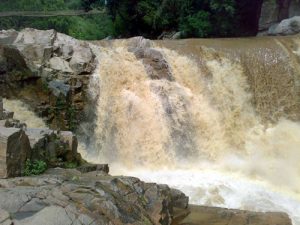West Garo Hills District in its present state has come into existence in October 1976 when Garo Hills district of Meghalaya was divided into two districts, West Garo Hills and East Garo Hills. The erstwhile West Garo Hills district was further divided into two administrative districts of West Garo Hills and South Garo Hills on June 1992. The district headquarters of West Garo Hills is Tura, which is the second largest town in the State after Shillong.
HOW TO REACH
 By Air:-
The nearest International Airport is Lokpriya Gopinath Bordoloi International Airport, Guwahati, roughly four hour drive from West Garo Hills. It is connected with the major cities like Delhi, Imphal, Kolkata, Agartala, Aizawl, Dibrugarh, Lilabari, Silchar, Dimapur, Jorhat and Mumbai.
By Road:-
West Garo Hills is 79 Kms from Songsak, 87 Kms from Paikan, 90 Kms from East Garo Hills, 107 Kms from Goalpara, 147 Kms from Bongaigaon, 209 Kms from Guwahati, 300 Kms from Shillong, 354 Kms from Tezpur, 412 Kms from Siliguri, 468 Kms from Dimapur and 675 Kms from Imphal and is connected through Meghalaya State Road Transport Corporation (MSRTC) and some private travel services.
By Train:-
The nearest Railway Station is Guwahati Railway Station which is 210 Kms from the district and is connected to all the major cities of Meghalaya.
WHAT TO SEE
Nokrek Biosphere Reserve:-
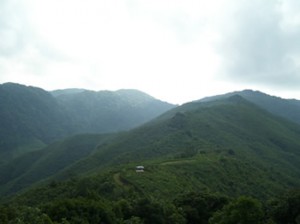
NokrekThe Nokrek National Park is about 45 kms via Asananggre and Sasatgre but just about 2 kms from Tura Peak in West Garo Hills, provided you are an avid trekker. Nokrek is the highest peak in Garo Hills and has been declared a National Biosphere under the control and management of the state forest department. The peak is teeming with very rare plants and animals deep inside the thick jungle. The park is also home to a very rare species of citrus-indica endemic to this place which the locals call me.mang narang which when literally translated means the ‘orange of the spirits’. This discovery led to the establishment of the National Citrus Gene
Sanctuary-cum-Biosphere Reserve at Nokrek which covers an area of about 47 sqkm.
Pelga Falls:-
Pelga fall just located at the distance of 7 kms from Tura has become increasingly hot spot for anglers and picnickers in recent years. The tourism developed this place by constructing a footpath and view point. A typical
traditional Garo bamboo bridge constructed over Ganol river is another added attraction.
Wadagokgre:-

Any tourist who is interested in history can visit Wadagokgre which is one of the most interesting and attractive places in West Garo Hills. It is a place where an excavation was taken up by the pre-history branch of the
Archeological Survey of India and proved that this was one of the biggest cities, a religious centre cast out of the Bramaputra river from the fourth century A.D. or even earlier. The excavation so far have clearly
demonstrated that Wadagokgre was a sprawling township with Buddhism, Hinduism and amalgamation of the two being widely practiced in that area.
Kata Bheel:-
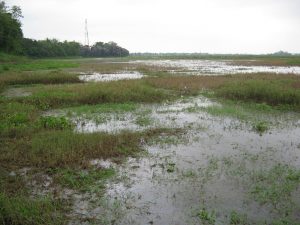
Located near Nogorpara village in West Garo Hills district, the beel is about seventy kilometres off
Tura on the Tura-Garobadha-Ampatigiri-Mahendraganj road. Tradition has it that this pond was dug and constructed under the instructions
of Lengta Raja of the Garos. The beautiful, soothing waters of Kata Beel covers about one hectare of area. The beel is surrounded by a planned
plantation of palms. Kata Beel is a major fishing ground of Garo Hills and well known to anglers and fishermen. A convenient picnic spot which is frequented by young and old alike, particularly during the hot and sultry local summer months.
Arbella Peak:-
 A lofty blue hill with an elevation of nine hundred and ninety nine metres above sea level stands on the north-eastern flank of Tura. The hilly range on which it is located is known as Arbella Range and the peak as Arbella Peak. The drive-up to the peak passes through deeply forested glades, full of shrubs and orchids of unparalleled beauty. Wildfowl and pheasants of exciting plumage and colour abound, besides birds of all sizes and variety making the place an idyllic resort of natural joy. A small rest house built by the British Colonialist, a century ago, on the Arbella peak continues to provide visitors with the shelter from the elements.
A lofty blue hill with an elevation of nine hundred and ninety nine metres above sea level stands on the north-eastern flank of Tura. The hilly range on which it is located is known as Arbella Range and the peak as Arbella Peak. The drive-up to the peak passes through deeply forested glades, full of shrubs and orchids of unparalleled beauty. Wildfowl and pheasants of exciting plumage and colour abound, besides birds of all sizes and variety making the place an idyllic resort of natural joy. A small rest house built by the British Colonialist, a century ago, on the Arbella peak continues to provide visitors with the shelter from the elements.
Sasatgre:-
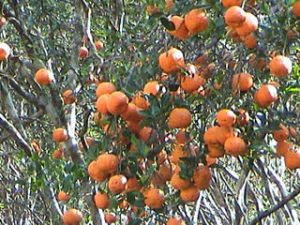
Located on the hilly crescent – like saddle, at the foot of the Nokrek peak, in the West Garo Hills district, Sasatgre village is accessible by a jeepable road from Oragitok village which lies on the Tura-Asanangre-Williamnagar State highway. The distinguishing feature of this village is that although all the houses are built in the typical Garo Pattern and design, they are spacious, airy, well-built and firm. The winds of development, change and prosperity have not changed the way of life of the Sasatgre villagers and they continue to be the repository of undiluted Garo custom, culture and convention. Sasatgre has been blessed by nature in so far as orange plantations are concerned and the village is surrounded by healthy,  dark green orange bushes, which are highly productive. The village now falls on the periphery of the Nokrek Gene Sanctuary-cum-Biosphere Reserve.
Rombagre:-
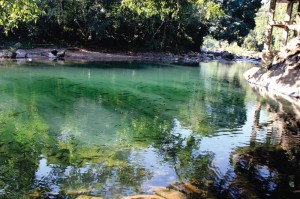 Rombagre is situated at the distance of 35kms from Tura on the side of Williamnagar-Tura PWD Road. There is a beautiful water pool that has
Rombagre is situated at the distance of 35kms from Tura on the side of Williamnagar-Tura PWD Road. There is a beautiful water pool that has
been preserved and protected by the local villagers in the Simsang River where schools of fish are found swimming in the clear waters turning the place virtually into a tourist spot as many travellers are often found enjoying the fish in the protected water pool. Besides, there are lovely picnic spots in and around Rombagre which attract many people from far and near for seasonal picnics every year.
Â
